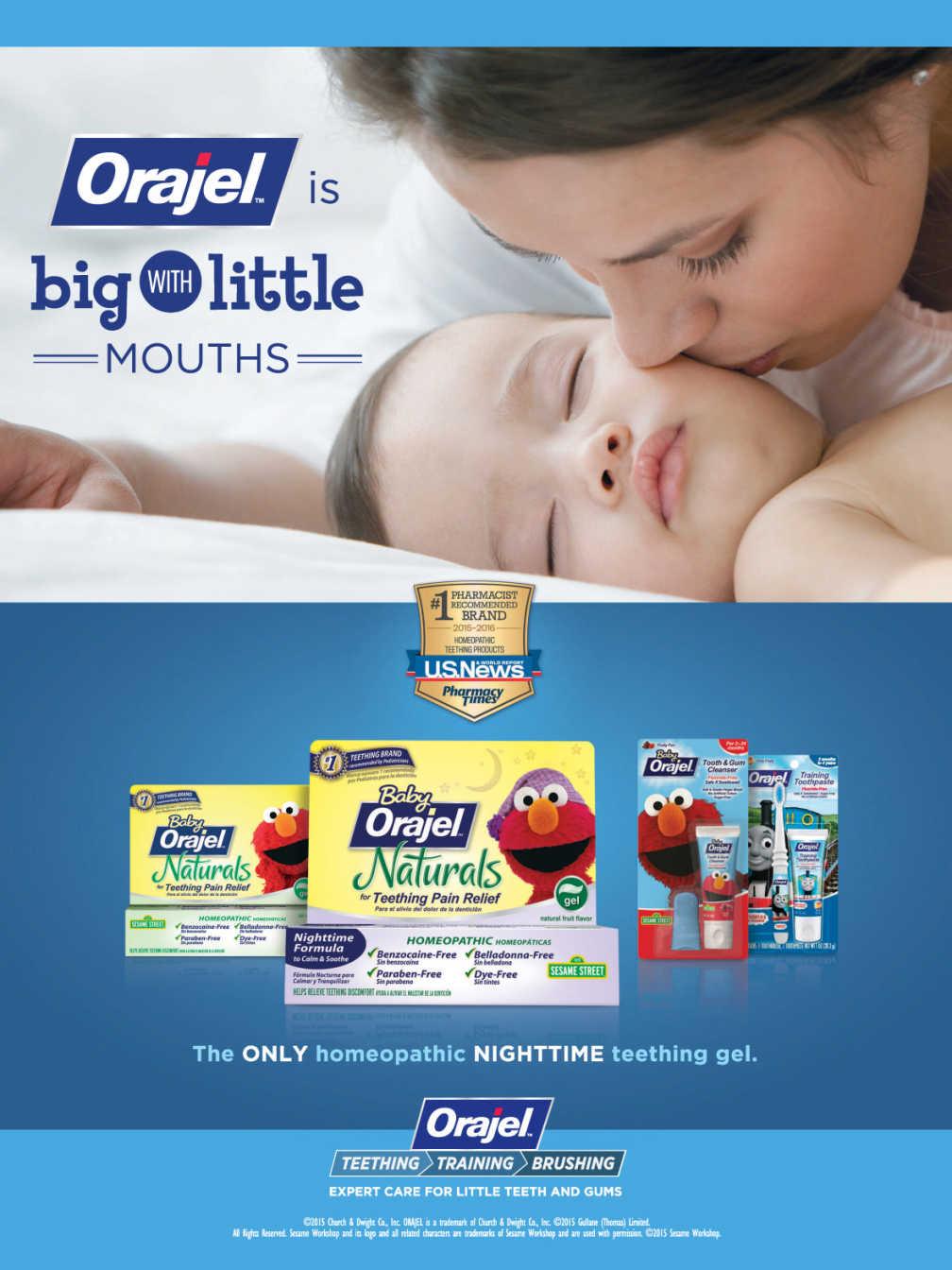
9 minute read
Your Toughest Money
goodstuff MUST-HAVES & MUST-DOS FOR MOM & FAMILY
3 SIMPLE STEPS to Flu-Proof Your Family This Winter
Advertisement
GET
Vaccinated Yearly
The first and most important way to prevent the flu is to get the flu vaccine for yourself and your family. Almost everyone six months and older should get vaccinated, especially those with chronic health conditions.
STOP
the Spread of Germs
Encourage everyday healthy habits, such as covering your mouth and nose when coughing or sneezing, avoiding close contact with people who are sick, and washing hands often.
TALK
to Your Doctor
If you think you or a member of your family may have the flu, contact your doctor promptly. Anti-viral drugs (available only by prescription) can lessen symptoms and prevent serious complications, like pneumonia.
FOR MORE INFORMATION ABOUT INFLUENZA,
contact your doctor or visit cdc.gov/flu. Orville Redenbacher’s® Gourmet® Popcorn
Orville Redenbacher’s® pops up lighter and fluffi er, making it the perfect popcorn for quality time with your friends and family.
orville.com
Never Miss That Moment Again
Catching life’s action-fi lled moments just got easier with 4K PHOTO from Panasonic LUMIX; an exclusive pause and save photo feature that exacts an exact moment from high-quality 4K video.
shop.panasonic.com/lumix-g7
goodies.
Sign up for our e-Newsletter to get an inside peek at the upcoming issue, a chance to win great prizes, and special off ers from our sponsors.
parentspromo.com ➜ Should you stay with cable or ditch it?
With cable bills skyrocketing (the average family now pays $123 per month) and ever more alternatives emerging, the smart move for many is to cut the cord, points out Suzanne Kantra, founder and editor of Techlicious .com, a consumer-electronics advice site. If your favorite shows are on local TV, consider a digital antenna, which allows you to pick up free signals in your area; try the Antennas Direct Micron-R ClearStream Indoor UHF DTV ($60 at amazon.com). To add a variety of content on demand— from basic cable and network shows to original programs—you can add Hulu (starts at $8 a month), Netflix streaming (starts at $10 a month), iTunes ($1 and up per episode), and/or Amazon Prime ($99 per year). These services let you customize what you view through a computer, streaming video box (like Amazon Fire TV Stick, $40, or Roku, starts at $50), or gaming system (like Xbox One, $350). Sling Television (starts at $20 per month) and PlayStation Vue (starts at $50 per month and available through PlayStation consoles) enable you to watch “live” TV, movies, and sports without a cable or satellite subscription. HBO Now ($15 per month) lets you stream all of the network’s content to the box or digital or mobile device of your choice, including first-run Sesame Street episodes. Showtime has a similar service ($11 per month, or $9 with Hulu). Sports nuts can subscribe to MLB TV (starts at $130 per year), NBA League Pass (starts at $120 per season), or NHL GameCenter (starts at $105 per season). Football fans will need NFL Sunday Ticket ($42 per month for DirecTV subscribers and $50 per month for the streaming
service). Note that when you quit cable, you’ll still need a broadband Internet connection, which costs $20 or more per month—so factor that into how much you’re really saving.
➜ Should you save for retirement or college first?
As a parent it’s hard to imagine saddling your kids with enormous debt—even a public university education is projected to cost close to $100,000 by the time your baby is ready to leave the nest. Still, this adage bears repeating: Your child can take out loans for school; you can’t do the same for retirement. So put yourself first for a change. Aim to sock away 15 percent of your income in a tax-deferred 401(k) plan at work or an Individual Retirement Account (IRA) or a Roth IRA, advises Gary Belsky, coauthor of Why Smart People Make Big Money Mistakes and How to Correct Them. Any free funds remaining can go into a 529 college savings plan. Set up automatic 529 deductions from your paycheck or checking account, and ask your parents and in-laws to contribute too. Every little bit you invest now will help make higher education for your child a reality.
➜ Should you buy a house or keep renting?
Home ownership has long been the American dream, but with the fast-rising real-estate prices of recent years, it’s become a stretch for many young families. Online calculators at msn.com/money and trulia.com let you plug in your finances and weigh the options. But they can’t make this crucial life decision for you. If you plan to live in your home for at least five years (generally considered the break-even point), can manage a down payment of 20 percent, and possess sufficient funds to cover the maintenance and utility costs that come with home ownership, go for it, says Jane Hodges, author of Rent vs. Own. If you meet only some of these criteria, talk with a financial planner to determine whether you’re better off renting—and working to bolster your savings—before taking the next step.
➜ Should you set up an emergency fund or focus on paying off your debt?
It’s crucial to have money set aside in case you or your partner loses a job or you’re faced with unexpected expenses (like a major dental bill or a new hot-water heater). But it’s also important not to fall deeper into debt. Determining which of these to address first depends on the type of obligations you have, says Stephany Kirkpatrick, vice president of financial advice for LearnVest.com.
If saving the recommended three to six months’ worth of your net salary in an emergency fund seems impossible, shoot for one month—and keep making minimum payments. Then chisel away at any card balances you have. “Credit cards are dangerous because the rates are high and the interest grows daily,” says Kirkpatrick. Once you’ve paid them off, fully fund your emergency account. When that’s done, switch your attention to paying off lowerinterest car and student loans. That may sound like a lot, but it’s a blueprint that will help secure your family’s financial future. ❾

THE POWER OF TWO.
SMALL PRICE.

ages+stages.
ADVICE AS YOUR CHILD GROWS

“It was magical, this snow-globe world.” Sarah Addison Allen, The Sugar Queen
BABY 0-12 months
cold comfort
If your little one is sick, follow this guide to help her feel better.
by JENNIFER RAINEY MARQUEZ
OF ALL THE milestones your baby will encounter in her first year, few will be as heartbreaking as her first cold. She might pant during feedings, snort herself awake during a nap, or look at you, bewildered, as if to say, “What is happening to me?” You’ll want to do anything you can to make her feel better. While over-the-counter meds aren’t an option at this age—they’re neither safe nor effective, experts say—that doesn’t mean you can’t make your baby more comfortable when she’s feeling under the weather.
➜ Clear out the mucus.
For the first six months, babies tend to breathe through their nose, so congestion can hit them hard, says Mike Patrick, M.D., assistant professor of pediatrics at Nationwide Children’s Hospital, in Columbus, Ohio. The standard blue-bulb syringe can be too big for the tiniest nostrils, so try the smaller green version that’s marketed as an ear syringe. After inserting it into your baby’s nostril, tilt the tip down slightly so it’s more perpendicular to his face, and gently push it in as far as it can go. “You’ll be surprised how much mucus you can get out,” says Dr. Patrick. For more power, use saltwater nose drops or spray to loosen the congestion. You can buy some at the drugstore, or make your own every day by mixing a quarter teaspoon of salt in 8 ounces of water, boiling it for ten minutes, and then cooling it to room temperature.
➜ Keep her hydrated.
Just like adults, babies sometimes don’t feel like eating when they’re sick, but you should still encourage your baby to nurse or take a bottle as often as possible, says Charla Tabet, infant-development specialist at La Rabida Children’s Hospital, in Chicago. If she won’t drink milk, consult with your doctor to make sure she doesn’t become dehydrated—and ask if it’s okay to offer her an electrolyte solution, such as Pedialyte. Feeding your baby in an upright position can also help ease congestion and prevent mucus from running down her throat while she’s trying to drink.

➜ Help him cough it out.
“Babies don’t have the muscle strength to cough effectively, so it can be tough for them to clear phlegm,” says Stan Spinner, M.D., chief medical officer of Texas Children’s Pediatrics in Houston. One way to help: Take your baby into the bathroom and turn on the shower to make the air hot and steamy. “It will get his nose running, loosen the mucus in his throat, and make his coughs more productive,” says Dr. Spinner. Try doing it before bed, since mucus tends
to drain into his throat and chest while he’s lying down.
A humidifier set up in the baby’s bedroom can also help ease congestion, Dr. Spinner says. Be sure to keep it out of your baby’s reach, and fill it with fresh water every day so it doesn’t get moldy.
➜ Encourage rest.
Your baby needs more sleep when she’s sick, but all those annoying symptoms can make a decent snooze difficult. For a not-very-mobile baby, raising the head of her crib might help (but keep in mind that once she can roll around, she might end up head down and feet up).
If a fever is making her too cranky to sleep, it’s safe to give her infant acetaminophen between ages 2 and 6 months, and either infant acetaminophen or ibuprofen after 6 months. (Just make sure you carefully measure the dosage according to your baby’s weight, not her age.) If she’s younger than 2 months, consult your doctor before giving her medication. A comforting bedtime routine—such as playing music or taking a bath together—can go a long way toward encouraging her to nod off too.
➜ Watch for warning signs.
If your baby seems to be getting worse, it may be time to contact your pediatrician. For infants up to 3 months, any fever over 100.4°F is a “call your doctor right away” scenario, says William Varley, M.D., community pediatrician with Children’s Hospital of Pittsburgh. For older babies, look out for a fever that lasts more than three days or that develops a few days after the onset of cold symptoms.
Other signs to watch for include wheezing or rapid, strained breathing, which may indicate a virus or pneumonia. If your baby develops coughing fits, it may be whooping cough. Don’t hesitate to reach out to your doctor with concerns. ❾







